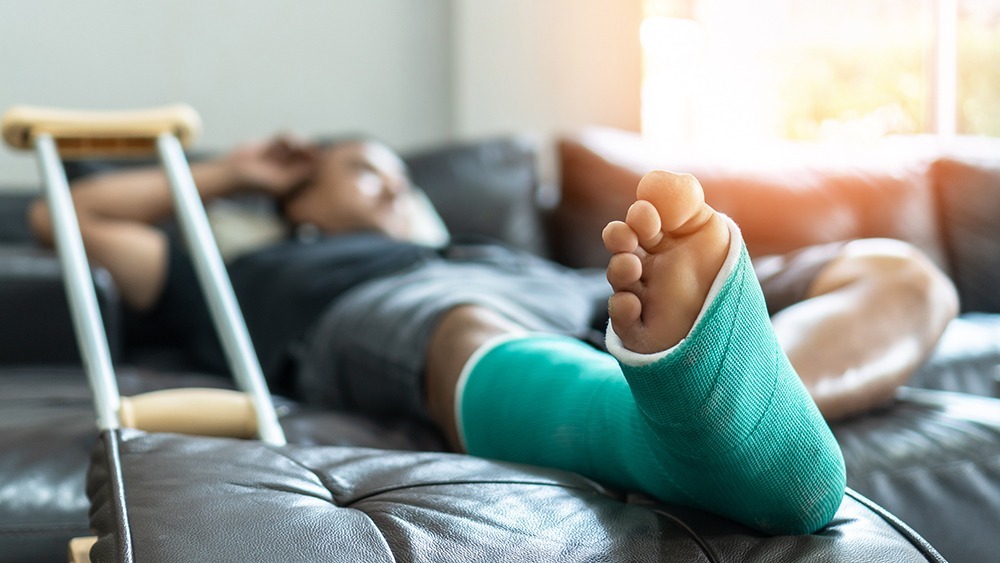The Keys to Proving Fault in a Premises Liability Lawsuit
Share:
Picture this: You’re walking into a restaurant when you trip over a broken tile in the entryway. No warning cones, no signs—just you, on the ground, in pain. Situations like this raise an important question: Is the property owner responsible?
This is where premises liability law comes in. These cases revolve around one central issue—negligence. To win, an injured person must prove that the property owner failed to keep the premises reasonably safe and that failure directly caused the injury.
But proving liability isn’t always straightforward. Property owners and their insurers often push back hard, making it essential to know what evidence matters and how to build a strong claim. Let’s break down the steps.
Step 1: Show the Property Owner Owed a Duty of Care
The foundation of any premises liability case is the duty of care. Property owners, landlords, businesses, and even homeowners are generally required to maintain their property and protect visitors from hazards. But here’s the nuance: your legal status as a visitor often determines how much protection you’re owed.
Invitees: Customers, clients, and others invited for business purposes. Owners must actively inspect and fix hazards for them.
Licensees: Social guests or people entering with permission. Owners must warn them of known dangers but aren’t always required to inspect for unknown ones.
Trespassers: People entering without permission. Owners owe them very limited duty—except they can’t intentionally create hazards and must take special care if children are likely to trespass (the “attractive nuisance” doctrine).
Example: If you’re shopping in a supermarket, the store has a duty to regularly check for spills and clean them up. If they don’t, and you slip, they may be liable.
Step 2: Identify and Document the Hazard
To prove liability, you must show there was a dangerous condition on the property. This is where evidence gathering is key. Essential evidence includes:
- Photographs and videos of the hazard (broken stairs, icy walkways, cluttered aisles).
- Surveillance footage from security cameras.
- Incident reports created by the business or police.
- Maintenance logs showing whether inspections were done.
Pro Tip: Hazards can be fixed quickly after an accident. If possible, take photos immediately or ask a trusted friend to document the scene.
Step 3: Prove the Owner Knew—or Should Have Known—About the Hazard
This is often the toughest hurdle. It’s not enough to prove the hazard existed—you must show the property owner knew about it or should have known if they were acting reasonably. Courts look at:
- Duration: How long the hazard was present. (A spill left for hours is harder to defend than one that happened seconds before.)
- Inspection practices: Did the owner have reasonable safety checks in place?
- Prior complaints or accidents: Evidence that the hazard was a recurring issue strengthens your case.
Example: If tenants had repeatedly complained about a broken handrail and the landlord ignored it, liability is far easier to prove.
Step 4: Collect Witness Testimony
Witnesses can help confirm the hazard existed and that the owner neglected to address it. Useful witnesses may include:
- Shoppers, tenants, or guests who saw the hazard.
- Employees who were aware of the danger but failed to act.
- Expert witnesses (like building inspectors) who can testify about safety standards.
A neutral third-party witness is often especially persuasive, since they have no personal stake in the outcome.
Step 5: Link the Hazard to Your Injury
You also need to prove that the unsafe condition directly caused your injury. This means connecting the dots between the accident and your damages. Key evidence includes:
- Medical records showing the timing and nature of your injury.
- Doctor testimony confirming the injury wasn’t pre-existing.
- Accident reports linking the hazardous condition to your harm.
Example: If you trip on a broken step and tear a ligament, records showing you sought treatment right away reinforce that the fall was the cause—not an old sports injury.
Step 6: Prove Damages
Finally, you must show that your injuries caused real, measurable harm. Damages in premises liability cases often include:
- Medical bills (hospital visits, surgery, physical therapy).
- Future medical costs for ongoing care.
- Lost wages if you missed work.
- Loss of earning potential if you can’t return to your job.
- Pain, suffering, and emotional distress.
- In severe cases, permanent disability or disfigurement.
Statistic: The CDC reports that falls (a common type of premises liability case) cost over $50 billion annually in medical expenses nationwide.
Common Defenses Property Owners Use
It’s also important to understand how property owners defend themselves. They may claim:
- The hazard was “open and obvious” (and you should have avoided it).
- They had no knowledge of the hazard.
- You were partly at fault for not paying attention.
Florida and Georgia follow comparative negligence rules, meaning your compensation may be reduced if you’re found partly responsible. This is one reason why strong evidence and legal representation are crucial.
Why a Lawyer Can Make or Break Your Case
Premises liability cases are rarely simple. Property owners and insurance companies fight hard to avoid payouts, often with experienced legal teams. An attorney can:
- Conduct a thorough investigation.
- Subpoena surveillance footage and maintenance records.
- Cross-examine witnesses and experts.
- Negotiate with insurers to secure a fair settlement.
- Represent you in court if necessary.
At DuFault Law, we’ve seen firsthand how powerful evidence and strong advocacy can turn the tide for injured victims.
Hurt on Someone Else’s Property? Don’t Wait to Prove Your Case.
Premises liability cases are complex—property owners and insurers will do everything possible to deny fault. But with the right evidence and strong legal representation, you can hold them accountable.
At DuFault Law, our experienced premises liability attorneys fight for victims across Florida and Georgia. We’ll gather evidence, challenge the defense, and work tirelessly to secure the compensation you deserve for medical bills, lost income, and pain and suffering.
- Call us at (239) 422-6400
- Email us at contact@dufaultlaw.com
- Or Visit our Contact Page to schedule a consultation



Comments are closed